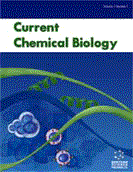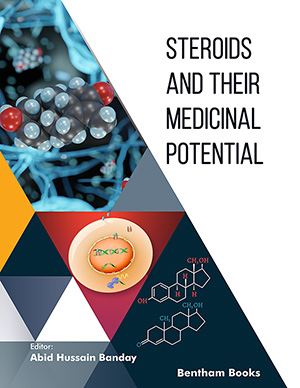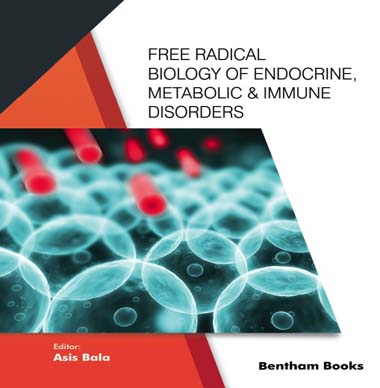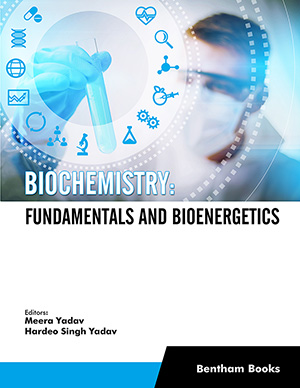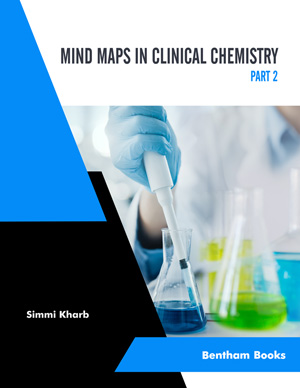Abstract
The virus SARS-CoV-2 (Severe acute respiratory syndrome coronavirus 2) causes COVID 19 (CoronaVIrus Disease 19), a global pandemic with multi-organ failure, resulting in high morbidity and mortality. Some individuals are more vulnerable than others and have deleterious consequences following covid- 19. It has been postulated that Heme oxygenase-1 (HO-1) reduction and free heme may contribute to many of the inflammatory phenomena observed in COVID-19 patients. Therefore, HO-1 inducers could prove to be potential therapeutic or preventive agents for COVID 19. Many of the natural compounds present in fruits and vegetables, such as polyphenols, were able to induce HO-1. The aim of this review is to focus on the main foods containing bioactive compounds able to induce HO-1 for an informed choice of foods to use to counteract damage from SARS-CoV-2 infection.
Keywords: SARS-CoV-2, heme oxygenase-1, heme oxygenase-1 inducers, oxidative stress, natural compounds, food.
[http://dx.doi.org/10.1016/j.lfs.2020.117839] [PMID: 32450165]
[http://dx.doi.org/10.1016/j.chempr.2020.04.023] [PMID: 32529116]
[http://dx.doi.org/10.1038/s41591-020-0868-6] [PMID: 32327758]
[http://dx.doi.org/10.1007/s11684-020-0754-0] [PMID: 32170560]
[http://dx.doi.org/10.1073/pnas.2003138117] [PMID: 32376634]
[http://dx.doi.org/10.1056/NEJMoa2002032] [PMID: 32109013]
[http://dx.doi.org/10.1007/s12192-020-01126-9] [PMID: 32500379]
[http://dx.doi.org/10.1016/j.jmii.2020.10.001] [PMID: 33176981]
[http://dx.doi.org/10.18087/cardio.2020.5.n1132] [PMID: 32515699]
[http://dx.doi.org/10.3390/antiox9060540] [PMID: 32575554]
[http://dx.doi.org/10.1016/j.freeradbiomed.2020.10.016] [PMID: 33091573]
[http://dx.doi.org/10.1016/S0162-0134(00)00156-2] [PMID: 11132636]
[http://dx.doi.org/10.1089/ars.2004.6.797] [PMID: 15345138]
[http://dx.doi.org/10.3389/fimmu.2020.01467] [PMID: 32849503]
[http://dx.doi.org/10.1152/physrev.00003.2016] [PMID: 27604527]
[http://dx.doi.org/10.2174/1381612824666180717101104] [PMID: 30014798]
[http://dx.doi.org/10.2174/1381612824666180717161338] [PMID: 30019639]
[http://dx.doi.org/10.1007/s00795-018-0205-z] [PMID: 30171344]
[http://dx.doi.org/10.1016/j.toxrep.2020.04.012] [PMID: 32355638]
[http://dx.doi.org/10.2174/138920112800399338] [PMID: 22201606]
[http://dx.doi.org/10.1161/ATVBAHA.114.304729] [PMID: 25359861]
[http://dx.doi.org/10.1086/302729] [PMID: 10631150]
[http://dx.doi.org/10.1002/ijc.21937] [PMID: 16596642]
[http://dx.doi.org/10.1182/blood-2002-12-3733] [PMID: 12730098]
[http://dx.doi.org/10.1093/aje/kwq162] [PMID: 20682519]
[http://dx.doi.org/10.1136/jmg.2005.039743] [PMID: 16882737]
[http://dx.doi.org/10.2174/1381612033453749] [PMID: 14529552]
[http://dx.doi.org/10.3390/molecules190710074] [PMID: 25014534]
[http://dx.doi.org/10.1016/j.biotechadv.2017.12.012] [PMID: 29277308]
[http://dx.doi.org/10.1021/acs.jmedchem.6b00228] [PMID: 27031670]
[http://dx.doi.org/10.1016/j.bbagen.2016.07.026] [PMID: 27474998]
[http://dx.doi.org/10.1124/mol.61.3.554] [PMID: 11854435]
[http://dx.doi.org/10.2174/1381612823666170210151411] [PMID: 28190391]
[http://dx.doi.org/10.2174/0929867324666170616110748] [PMID: 28618991]
[http://dx.doi.org/10.1111/1750-3841.14643] [PMID: 31132143]
[http://dx.doi.org/10.3390/nu12061562] [PMID: 32471251]
[http://dx.doi.org/10.1093/ije/dyy178] [PMID: 30239739]
[http://dx.doi.org/10.1016/j.jada.2008.11.036] [PMID: 19248856]
[http://dx.doi.org/10.3390/nu11010053] [PMID: 30597847]
[http://dx.doi.org/10.1016/j.ejmech.2019.04.075] [PMID: 31096120]
[http://dx.doi.org/10.1016/j.pharmthera.2011.02.004] [PMID: 21356239]
[http://dx.doi.org/10.2174/138161208783597399] [PMID: 18289074]
[http://dx.doi.org/10.3390/antiox9121191] [PMID: 33260980]
[http://dx.doi.org/10.1080/10715760100301451] [PMID: 11811546]
[http://dx.doi.org/10.1021/jf011205+] [PMID: 11853511]
[http://dx.doi.org/10.1093/jn/133.7.2125] [PMID: 12840166]
[http://dx.doi.org/10.1016/S0024-3205(03)00356-4] [PMID: 12818719]
[http://dx.doi.org/10.3177/jnsv.48.305] [PMID: 12489822]
[http://dx.doi.org/10.1093/ajcn/73.5.920] [PMID: 11333846]
[http://dx.doi.org/10.1021/jf001246q] [PMID: 11312894]
[http://dx.doi.org/10.1002/mnfr.200600204] [PMID: 17440991]
[http://dx.doi.org/10.1016/j.cbi.2016.10.022] [PMID: 27983965]
[http://dx.doi.org/10.1016/j.foodres.2019.108591] [PMID: 31732077]
[http://dx.doi.org/10.1016/j.cbi.2016.11.003] [PMID: 27818126]
[http://dx.doi.org/10.1111/j.1753-4887.2008.00133.x] [PMID: 19146506]
[http://dx.doi.org/10.1177/2156587216641831] [PMID: 27055821]
[http://dx.doi.org/10.3109/02656736.2016.1155762] [PMID: 27055862]
[http://dx.doi.org/10.1016/j.fct.2012.02.020] [PMID: 22386815]
[http://dx.doi.org/10.2174/1573401317666210222103032]
[http://dx.doi.org/10.3390/ijms21249493] [PMID: 33327438]
[http://dx.doi.org/10.1080/10408690390826464] [PMID: 12587987]
[http://dx.doi.org/10.1371/journal.pone.0149032] [PMID: 26866373]
[http://dx.doi.org/10.1016/j.jnutbio.2011.06.007] [PMID: 22137262]
[http://dx.doi.org/10.1111/j.1432-2277.2011.01224.x] [PMID: 21291499]
[http://dx.doi.org/10.1007/s10068-016-0269-2] [PMID: 30263473]
[http://dx.doi.org/10.1016/B978-0-12-800173-8.00003-9] [PMID: 24794906]
[http://dx.doi.org/10.1016/j.bbrc.2004.11.051] [PMID: 15582601]
[PMID: 12553052]
[http://dx.doi.org/10.3892/mmr.2017.7911] [PMID: 29115468]
[http://dx.doi.org/10.3390/molecules23010215] [PMID: 29351226]
[http://dx.doi.org/10.3389/fphar.2018.00386] [PMID: 29731715]
[http://dx.doi.org/10.3892/ijmm.2012.1096] [PMID: 22922731]
[http://dx.doi.org/10.1097/MAO.0000000000000302] [PMID: 24608370]
[http://dx.doi.org/10.1038/aps.2014.166] [PMID: 25891083]
[http://dx.doi.org/10.1016/j.intimp.2019.106054] [PMID: 31812069]
[http://dx.doi.org/10.1002/med.1028] [PMID: 11746176]
[http://dx.doi.org/10.1016/j.lfs.2005.07.029] [PMID: 16236331]
[http://dx.doi.org/10.1016/S0378-8741(02)00332-X] [PMID: 12648829]
[http://dx.doi.org/10.3797/scipharm.0912-18] [PMID: 21179340]
[http://dx.doi.org/10.3892/ijo.2012.1428] [PMID: 22484302]
[http://dx.doi.org/10.1016/j.jnutbio.2019.108229] [PMID: 31698204]
[http://dx.doi.org/10.1016/S0753-3322(01)00158-5] [PMID: 12000139]
[http://dx.doi.org/10.2174/092986706775197962] [PMID: 16457641]
[http://dx.doi.org/10.1038/s41698-017-0038-6] [PMID: 28989978]
[http://dx.doi.org/10.1007/s11064-017-2421-7] [PMID: 29090409]
[http://dx.doi.org/10.1007/s12012-012-9178-7] [PMID: 22763982]
[http://dx.doi.org/10.1016/j.bcp.2004.09.015] [PMID: 15588712]
[http://dx.doi.org/10.1002/mnfr.201000016] [PMID: 20486211]
[http://dx.doi.org/10.1111/j.1749-6632.2003.tb07534.x] [PMID: 12853318]
[http://dx.doi.org/10.3390/ijms15011625] [PMID: 24451142]
[http://dx.doi.org/10.1111/j.1749-6632.2010.05842.x] [PMID: 21261636]
[http://dx.doi.org/10.1016/j.colsurfb.2019.04.030] [PMID: 31035056]
[http://dx.doi.org/10.1016/0140-6736(92)91277-F] [PMID: 1351198]
[http://dx.doi.org/10.1016/S0367-326X(02)00185-5] [PMID: 12495704]
[http://dx.doi.org/10.3892/etm.2015.2346] [PMID: 26136862]
[http://dx.doi.org/10.1016/j.freeradbiomed.2013.07.015] [PMID: 23892357]
[http://dx.doi.org/10.1016/j.ejphar.2010.06.016] [PMID: 20599928]
[http://dx.doi.org/10.14336/AD.2017.0903] [PMID: 30090650]
[http://dx.doi.org/10.3390/ijms20102441] [PMID: 31108850]
[http://dx.doi.org/10.1159/000491651] [PMID: 29996121]
[http://dx.doi.org/10.1016/j.intimp.2015.03.014] [PMID: 25812767]
[http://dx.doi.org/10.3892/ijmm.2019.4200] [PMID: 31115551]
[http://dx.doi.org/10.5582/ddt.2017.01048] [PMID: 29070744]
[http://dx.doi.org/10.2174/1389557519666190119111125] [PMID: 30659537]
[http://dx.doi.org/10.1371/journal.pone.0019705] [PMID: 21611183]
[http://dx.doi.org/10.1016/j.pharmthera.2020.107618] [PMID: 32592716]
[http://dx.doi.org/10.4103/0973-7847.194044] [PMID: 28082789]
[http://dx.doi.org/10.1089/jmf.2010.0198] [PMID: 21859349]
[http://dx.doi.org/10.1159/000076947] [PMID: 15118350]
[http://dx.doi.org/10.1016/j.bcp.2005.03.017] [PMID: 15876423]
[http://dx.doi.org/10.1016/j.intimp.2017.11.013] [PMID: 29149703]
[http://dx.doi.org/10.1016/j.biopha.2018.03.057] [PMID: 29554596]
[http://dx.doi.org/10.4162/nrp.2016.10.6.623] [PMID: 27909560]
[http://dx.doi.org/10.1089/jmf.2017.4108] [PMID: 29569982]
[http://dx.doi.org/10.1002/ptr.6887] [PMID: 33034398]
[http://dx.doi.org/10.1371/journal.pone.0059978] [PMID: 23560064]
[http://dx.doi.org/10.1345/aph.1A245] [PMID: 11895046]
[http://dx.doi.org/10.5142/jgr.2012.36.1.40] [PMID: 23717102]
[http://dx.doi.org/10.5142/jgr.2011.35.3.315] [PMID: 23717075]
[http://dx.doi.org/10.1016/0378-8741(92)90057-X] [PMID: 1501490]
[http://dx.doi.org/10.1038/aps.2008.6] [PMID: 19060914]
[http://dx.doi.org/10.1016/j.taap.2009.09.009] [PMID: 19781563]
[http://dx.doi.org/10.1159/000484578] [PMID: 29130959]
[http://dx.doi.org/10.1016/j.intimp.2018.06.008] [PMID: 29902710]
[http://dx.doi.org/10.1016/j.jgr.2015.04.002] [PMID: 26869831]
[http://dx.doi.org/10.1021/acs.jafc.8b02627] [PMID: 29974747]


